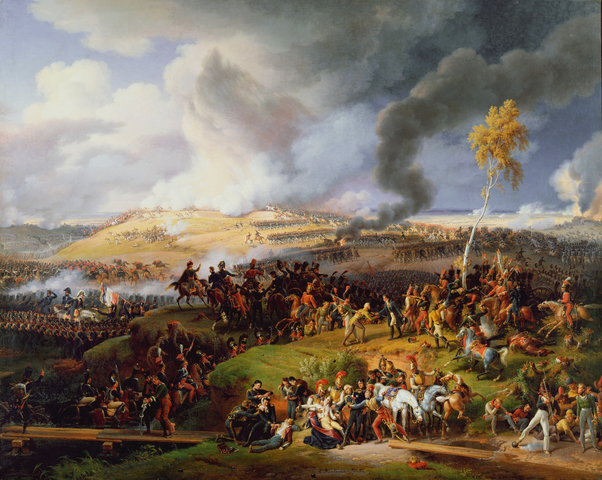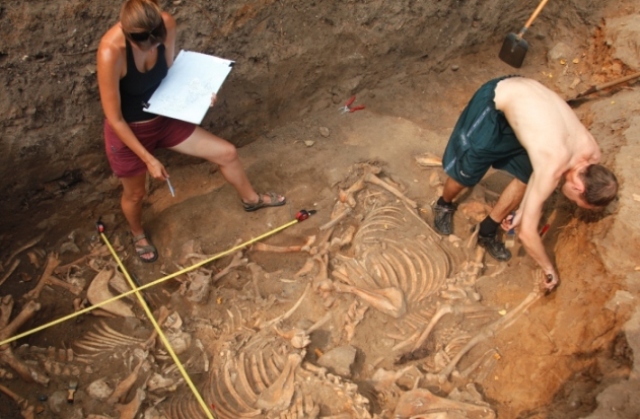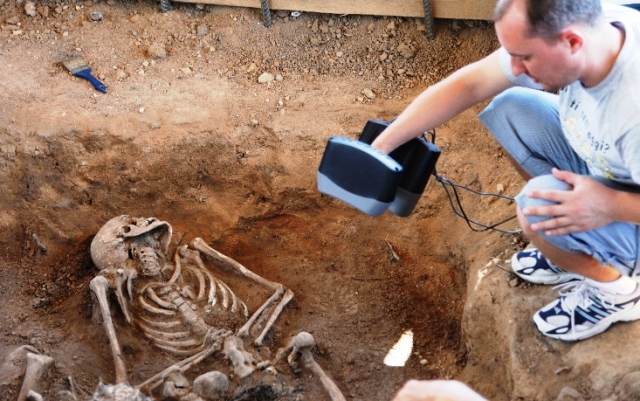3D scanning technology is getting better and better, and we really enjoy seeing new applications — like this brief look at the place where Napoleon met his match, and how Artec and 3D scanning are revolutionizing the field of archeology
![]() At the request of the Russian Academy of Sciences, Artec 3D recently scanned a portion of the famous Borodino battlefield where Napoleon was stopped by Russian forces outside of Moscow in 1812. This archeological usage of 3D handheld scanning (instead of photos and drawings) was a major step forward in managing data from archeology sites, providing “layers” of information and extremely fast results: taking hours, not months.
At the request of the Russian Academy of Sciences, Artec 3D recently scanned a portion of the famous Borodino battlefield where Napoleon was stopped by Russian forces outside of Moscow in 1812. This archeological usage of 3D handheld scanning (instead of photos and drawings) was a major step forward in managing data from archeology sites, providing “layers” of information and extremely fast results: taking hours, not months.

“Battle of Moscow, 7th September 1812”, 1822 by Louis Lejeune; courtesy of Wikipedia, the free encyclopedia
The year was 1812. Napoleon invaded Russia and was getting dangerously close to Moscow. The last stand for the city was the infamous battle of Borodino which took place on September 7th with more than 250,000 troops battling each other. At the conclusion of the battle, with no clear winner, Napoleon 1 ultimately entered Moscow, which had been burned to the ground by the Russians to destroy food for the French troops.
Marking the 200th anniversary of that battle, the Russian Academy of Sciences, commissioned Artec to help with excavation and documentation of the battle field. Artec was tasked with scanning all human and battle-horse remains. The job was not for the faint-of-heart. One of Artec?s tech workers nearly fainted. But they persevered…

Traditionally, archeologists use photography, as well as pen-and-paper, to document their findings. Using an Artec MHT scanner, Artec was able to not only document the objects/subjects they found during excavation, but they could also measure any part of the scene months after they left the site. The scanner also captured each object/subject layer by layer as it was being revealed. That means that each layer can be further analyzed.

The excavation site contained the remains of 38 war-horses and 11 soldiers. One soldier’s scan clearly shows a bullet wound to the head. Scanning took one hour and post processing took another hour (traditional tools would have taken many days). Artec Studio was used for further analysis in the lab..
About the Battle of Borodino from Wikipedia
![]()
![]()
![]()
![]()
![]()
ARTEC GROUP is a manufacturer and developer of professional 3D hardware and software. With its offices in Luxembourg, the US and Russia, Artec Group is a market leader in 3D scanning and 3D facial recognition technology, which is used by thousands of people all over the world. For more information visit www.artec3d.com.
And, thanks for reading
Don’t forget … we encourage you to share your discoveries with other readers. Just send and email, contribute your own article, join the Design Cafe forums, or follow DTG on Facebook!